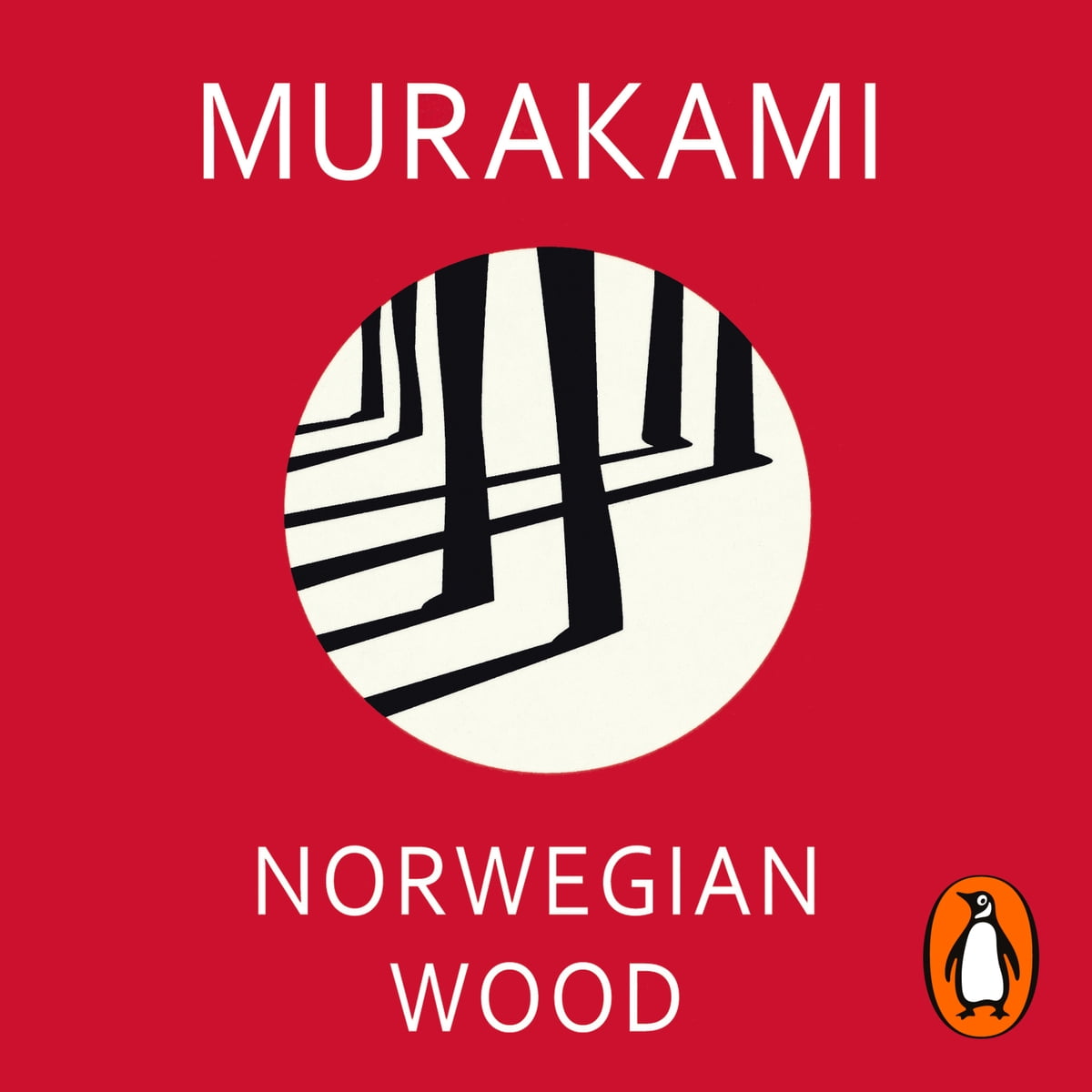Haruki Murakami’s *Norwegian Wood* audiobook is a captivating tale of love and loss. It immerses listeners in a nostalgic journey.
*Norwegian Wood* is a beloved novel by Haruki Murakami, now available as an engaging audiobook. The story follows Toru Watanabe, a college student in Tokyo, as he navigates complex relationships and emotional turmoil. Set in the 1960s, the narrative explores themes of love, memory, and the inevitability of change.
The audiobook brings Murakami’s evocative prose to life, making it accessible for modern listeners. Perfect for fans of literary fiction, this audiobook offers a profound and moving experience. Dive into the world of *Norwegian Wood* and let its poignant story captivate your senses.

Introduction To ‘norwegian Wood’
Haruki Murakami’s novel, ‘Norwegian Wood’, captures hearts worldwide. The book blends nostalgia, love, and loss. The audiobook version offers a new, immersive experience. Listening to it feels like a journey into Murakami’s world.
Murakami’s Journey
Haruki Murakami started as a jazz club owner. He turned to writing after a baseball game inspired him. His first novel, ‘Hear the Wind Sing’, gained attention. But it was ‘Norwegian Wood’ that made him famous. The book’s success was unexpected but well-deserved.
The Significance Of ‘norwegian Wood’
‘Norwegian Wood’ explores themes of love and loss. The story follows Toru Watanabe, a college student in Tokyo. He navigates life, love, and tragedy. The book’s title comes from a Beatles song. This song plays a crucial role in the story.
The novel is set in the 1960s. It reflects a time of change and unrest. Murakami captures the era’s essence perfectly. His writing evokes strong emotions and vivid imagery. The audiobook enhances this experience with its narration. It brings the characters and their struggles to life.
| Aspect | Details |
|---|---|
| Author | Haruki Murakami |
| Title | Norwegian Wood |
| Genre | Fiction |
| Setting | 1960s Tokyo |
| Key Themes | Love, Loss, Nostalgia |
In ‘Norwegian Wood’, each character has depth and complexity. The audiobook format brings out their voices clearly. You feel Toru’s pain, Naoko’s sadness, and Midori’s vibrance. This makes the story even more engaging.
The audiobook is perfect for those who love rich storytelling. It offers a unique way to experience Murakami’s work. Whether you’re new to his books or a longtime fan, this audiobook is a must-listen.

Exploring The Audiobook Format
Haruki Murakami’s “Norwegian Wood” is a magical story. The audiobook format makes this story even more enchanting. Listening to the tale unfolds differently than reading it.
Benefits Of Audiobooks
Audiobooks offer many benefits. They are perfect for multitasking. You can listen while driving or cooking.
- Convenience: Listen anywhere, anytime.
- Accessibility: Great for people with visual impairments.
- Engagement: Brings stories to life.
Norwegian Wood in audiobook format lets you dive into the story. You can feel the emotions and nuances more deeply.
Voice Narration And Its Impact
The voice narration of “Norwegian Wood” is crucial. A good narrator can make or break a story.
| Aspect | Impact |
|---|---|
| Tone | Sets the mood of the story. |
| Pace | Controls the story’s rhythm. |
| Emotion | Makes characters feel real. |
In “Norwegian Wood”, the narrator’s tone is soothing. The pacing keeps you hooked. The emotions are palpable.
The right narration enhances the listening experience. It brings Murakami’s world to life. The story becomes more vivid and memorable.
Characters That Resonate
Haruki Murakami’s Norwegian Wood audiobook captivates listeners with its rich character development. Each character offers a unique perspective on love, loss, and identity. In this section, we delve into the characters that make this story unforgettable.
Toru Watanabe: The Protagonist
Toru Watanabe is the central character in Norwegian Wood. His journey is deeply personal and reflective. Toru is a quiet, introspective college student. He grapples with the complexities of adulthood and relationships. His experiences shape his understanding of life and love.
Toru’s character is relatable to many listeners. He embodies the confusion and curiosity of youth. His interactions with other characters reveal his depth and vulnerability. As the protagonist, Toru’s narrative drives the story forward. His emotional depth makes him a compelling character to follow.
Naoko And Midori: Contrasting Love Interests
In Norwegian Wood, Toru is caught between two contrasting love interests: Naoko and Midori.
| Character | Personality | Relationship with Toru |
|---|---|---|
| Naoko | Fragile, introspective, troubled | Deep emotional connection, shared past |
| Midori | Lively, outgoing, independent | Contrasting energy, new beginnings |
Naoko is a delicate, introspective character. She shares a deep emotional connection with Toru. Their bond is rooted in a shared past. Naoko’s struggles with mental health add layers to her character. Her fragility makes her relationship with Toru poignant and complex.
Midori is the opposite of Naoko. She is lively, outgoing, and independent. Midori brings a fresh energy into Toru’s life. Her character represents new possibilities and change. The contrast between Naoko and Midori highlights Toru’s internal conflict. He is torn between the past and the future.
The dynamic between these characters enriches the narrative. Their interactions with Toru shape his journey. Naoko and Midori’s contrasting personalities add depth to the story. They make the audiobook a compelling listen.
Themes And Motifs
Haruki Murakami’s Norwegian Wood audiobook delves into deep themes and motifs. This novel is rich in emotional and psychological layers. Two significant themes are loneliness and loss, and the search for identity.
Loneliness And Loss
Loneliness is a recurring theme in Norwegian Wood. The characters experience profound isolation. Toru Watanabe, the protagonist, feels disconnected from his peers. His loneliness deepens with the death of his best friend, Kizuki.
Loss is another critical aspect of the story. Characters grapple with the death of loved ones. This brings a sense of emptiness and sorrow. Naoko, Kizuki’s girlfriend, struggles with her own emotional turmoil. Her battles with mental health issues add to the theme of loss.
The audiobook’s narration captures these emotions. The narrator’s tone conveys the depth of despair and isolation. This enhances the listener’s connection to the characters’ experiences.
The Search For Identity
Toru’s journey is also about finding his identity. He is a young man in a complex world. He navigates relationships and personal growth. This search for self is a central motif in the novel.
Naoko’s struggle with mental health is a part of her identity quest. She seeks understanding and peace within herself. Toru’s relationship with Midori further complicates his identity search. Midori represents a contrast to Naoko’s somberness. She is lively and open, challenging Toru’s perceptions.
The audiobook format brings these identity struggles to life. The narrator’s voice adds depth to each character’s journey. This allows listeners to immerse themselves in the story. They can feel the struggles and triumphs of each character.
Norwegian Wood is a novel that resonates deeply. Its themes of loneliness, loss, and identity are universal. The audiobook enhances these themes, making it a compelling experience.
Setting The Scene: 1960s Tokyo
Haruki Murakami’s Norwegian Wood transports listeners to 1960s Tokyo. This era, marked by social change and cultural shifts, sets the backdrop for the novel’s poignant story. The audiobook brings this vibrant period to life, immersing listeners in a time of revolution and exploration.
Historical Context
The 1960s in Tokyo saw rapid modernization. Post-war recovery efforts led to economic growth and urbanization. The city transformed into a bustling metropolis, with new buildings and technologies emerging.
During this decade, Japan hosted the 1964 Tokyo Olympics. This event showcased the nation’s progress and boosted national pride. The games also marked Japan’s return to the global stage after World War II.
Student movements were prominent in this era. Protests and demonstrations reflected the youth’s desire for political and social change. These movements influenced many aspects of daily life, including education and culture.
Cultural Impact On The Story
Murakami captures the essence of 1960s Tokyo in Norwegian Wood. The city’s energy and transformation are evident throughout the narrative. The characters navigate their lives against this dynamic backdrop, reflecting the era’s influence on their choices and experiences.
The music of the 1960s plays a significant role in the story. Songs by The Beatles and other artists provide a soundtrack to the characters’ lives. This music evokes the emotions and atmosphere of the time.
The era’s fashion and lifestyle are also integral to the story. The characters’ clothing, behaviors, and interactions mirror the cultural shifts of the 1960s. These elements add authenticity and depth to the narrative, making the audiobook a rich experience.
- Economic Growth: Rapid modernization and urbanization.
- Tokyo Olympics: 1964 games boost national pride.
- Student Movements: Youth-driven political and social change.
- Music: 1960s songs enhance the story’s atmosphere.
- Fashion: 1960s styles reflect cultural shifts.
Music In ‘norwegian Wood’
Music plays a significant role in Haruki Murakami’s Norwegian Wood. It sets the tone and deepens the connection between characters. The audiobook brings this musical aspect to life. Let’s explore the music in Norwegian Wood.
The Beatles’ Influence
The title Norwegian Wood references a famous Beatles song. This song symbolizes nostalgia and longing. It connects deeply with the book’s themes of love and loss. The Beatles’ music is a recurring element in the story. It represents a time of change and youth culture in the 1960s.
Murakami uses the song to anchor the reader in the era. It also evokes specific emotions related to the characters. The audiobook includes musical interludes that enhance this connection.
Music As A Narrative Device
Music serves as a powerful narrative device in Norwegian Wood. It helps in character development and setting the mood. Different songs are mentioned throughout the story. These songs offer insights into the characters’ inner worlds.
For instance, the protagonist, Toru Watanabe, often listens to records. These moments provide a glimpse into his emotional state. The audiobook captures these moments beautifully with background music.
Here is a list of key songs mentioned in the book:
- “Norwegian Wood” by The Beatles
- “California Girls” by The Beach Boys
- “Here Comes the Sun” by The Beatles
Each song adds a layer of meaning to the narrative. It highlights the characters’ experiences and emotions. The audiobook enhances this experience with carefully selected music tracks.
Music in Norwegian Wood is more than just a backdrop. It’s a crucial element that enriches the story. The audiobook version makes this even more vivid and engaging.
Critical Reception
The audiobook version of Haruki Murakami’s Norwegian Wood has garnered significant attention. Many listeners have praised its storytelling and production quality. The critical reception highlights the global appeal and the literary critiques it has received.
Global Appeal
Norwegian Wood has captivated audiences worldwide. Its themes resonate with people from different cultures. The audiobook brings Murakami’s words to life, reaching a broader audience.
- Translated into multiple languages.
- Available on various audiobook platforms.
- Appeals to both young and old listeners.
The narration adds depth to the characters. It enhances the overall experience for listeners. This has contributed to its widespread popularity.
Literary Critiques
Critics have lauded the audiobook for its faithful representation of the novel. The narration captures the essence of Murakami’s writing. It maintains the novel’s melancholic and nostalgic tone.
| Aspect | Critique |
|---|---|
| Narration | Engaging and immersive. |
| Production Quality | High-quality sound and clarity. |
| Character Voices | Distinct and memorable. |
The audiobook has been described as a gateway to Murakami’s world. It is an experience that stays with the listener. Both new and longtime fans appreciate its quality.
In essence, the audiobook of Norwegian Wood has received critical acclaim. It continues to impact listeners globally. Its literary qualities and narration make it a standout.

Experiencing ‘norwegian Wood’ In Audio
Haruki Murakami’s ‘Norwegian Wood’ is a beloved novel. Experiencing it as an audiobook offers a new dimension. The spoken word brings the story to life in unique ways. This format enhances the emotional depth of the novel.
Engagement Through Listening
Listening to ‘Norwegian Wood’ can be captivating. The narrator’s voice adds emotion and nuance. Hearing the story can make it more personal and vivid.
An audiobook allows you to multitask. You can listen while commuting, exercising, or relaxing. This makes it easier to fit reading into a busy schedule.
Many listeners find audiobooks more immersive. The combination of voice and sound can transport you to another world. This can deepen your connection to the story.
Comparing Formats: Audio Vs. Text
| Format | Advantages | Disadvantages |
|---|---|---|
| Audio |
|
|
| Text |
|
|
Both formats have their strengths. Audiobooks offer convenience and emotional depth. Text allows for detailed analysis and easy referencing.
Choosing between them depends on your preferences. Both can enrich your experience of ‘Norwegian Wood’.
Conclusion
Haruki Murakami’s “Norwegian Wood” audiobook offers a mesmerizing listening experience. Its rich narrative and deep emotions captivate listeners. Perfect for fans of literary fiction, this audiobook brings Murakami’s world to life. Dive into this timeless story and let the enchanting voice guide you through its intricate layers.



